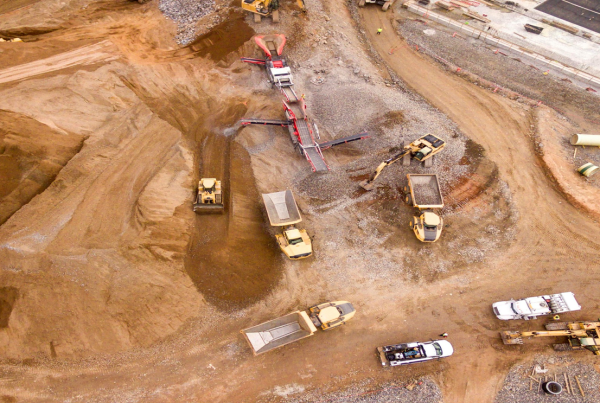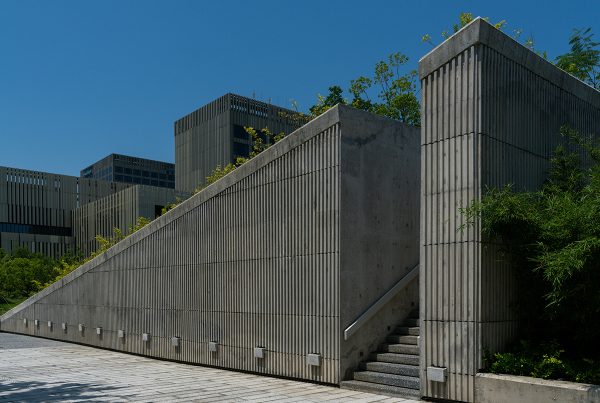The equation is simple: green buildings make for happy, healthy, and consequently, productive workers. At least that’s the hope.
When LEED v4 came out, it brought a more reinforced MR (Material + Resources) credit to the scene. Its potent message is that toxic ingredients in building materials have absolutely no place inside our buildings. After all, we spend 80 to 90{e3829ec1db02d54faaf9fa2de0d48db26af01d7a7944a63c3b26976124791cab} of our lives indoors. We can’t have rogue chemicals leaching into the mostly trapped and recirculated air we breathe, no matter how efficient our HVAC systems.
This ban on chemicals of concern signaled a great change in green building. Yes, LEED designers are still concerned about reducing environmental impacts and saving on operational costs. But now there’s also a heightened interest in the health and well-being of building occupants. Those two concepts aren’t just cheerful by-products of our green building efforts anymore—they’re legitimately worth pursuing alongside the more important aspects such as building performance.
Healthy Buildings vs Sick Buildings
But here’s the thing: how strong really is this link between green building and productivity? Several studies have concluded that green office design is crucial to staff well-being and productivity, while another study has found that “although (…) employees are generally satisfied with working in green-certified buildings, they are no happier than they would be in a non-LEED building.”
Unlike with building performance or office productivity, we still have to come up with a reliable metrics for measuring happiness. It’s a very subjective subject, not easily reflected on administered surveys and questionnaires. Some researchers look into a person’s Twitter and Facebook account, to gauge individual happiness judging by the positivity vs. negativity of posts and tweets.
Measuring health impacts is a bit more reliable. Indoor air quality, which is largely a contributing factor to people’s health, is a more controllable variable, and can be measured for chemical pollutants and VOCs, carbon dioxide, molds, etc. The science of risk assessment isn’t completely decided though on how to measure the combined effects of air pollutants on people, an argument used by many manufacturers whose building products come into question.
Even the so-called sick building syndrome—that constellation of symptoms that include headaches, eye, nose, and throat irritations, gastrointestinal troubles, and difficulty in breathing—which arises when people spend a significant amount of time inside buildings, had been debunked on and off. A 2006 research done in London found that SBS is more closely linked to stress from very demanding jobs (especially for people with little decision-power) than to the physical environment. In this case, sick building syndrome is a misnomer. The researchers did note that building design still mattered in the long run, but job stress is more likely the culprit.
Still, as the saying goes, better safe than sorry. We just can’t discount the possible long-term effects of toxic chemicals on our health. Just by regulating the use of toxic ingredients in building materials, we’re also doing the environment a big favor.
Let There Be Light, the Natural Kind
If there’s one thing scientists agree on, it’s the effect of adequate sunlight exposure on our well-being.
As a species we’re hardwired to live by the sunlight, our circadian rhythm obeying the cycle of light and darkness despite our very best efforts to make it adapt to our career and lifestyles. Now, the light we get is the artificial kind, emitted by florescent lighting and our glowing computer screens, much to the disruption of our body’s processes and eventually our health.
The solution, let the natural goodness of sunlight in, and make everyone happy.
Shopping malls capitalize on this fact; installed skylights reportedly make for happy shoppers and up to a 40{e3829ec1db02d54faaf9fa2de0d48db26af01d7a7944a63c3b26976124791cab} boost in sales. When schools factor in full-spectrum lighting in their building design, students became healthier, performed better academically, behaved more positively, and had fewer absences. Even prisons and jails recognize the effects of sunlight exposure and lack thereof on the mindset of inmates. Clearly, daylighting isn’t all about saving on energy costs.
Another area where green building has a significant contribution to people’s well-being is the natural landscapes surrounding the structure. Rachel and Stephen Kaplan’s classic study in the early ‘90s found out that when employees have unhampered views of green landscapes, they were less stressed out and more satisfied with their jobs. The employees don’t even have to have access to the gardens themselves—just a windowful of view was enough for them. Though, of course, knowing you can step onto the green grass when you want to is also much better than just having a glimpse of it.
Green buildings really have to shift its focus from pursuing economic benefits to putting people’s well-being on the forefront
So what’s the simple takeaway in all of this? Less chemicals, more sunlight, more nature, more areas to roam in our green buildings. Because that’s what we’re hard-wired for as a species anyway. Buildings don’t have to be strictly steel and glass enclosures that rob us of freedom. If designed well, they can also be in tune with our natural lives.











